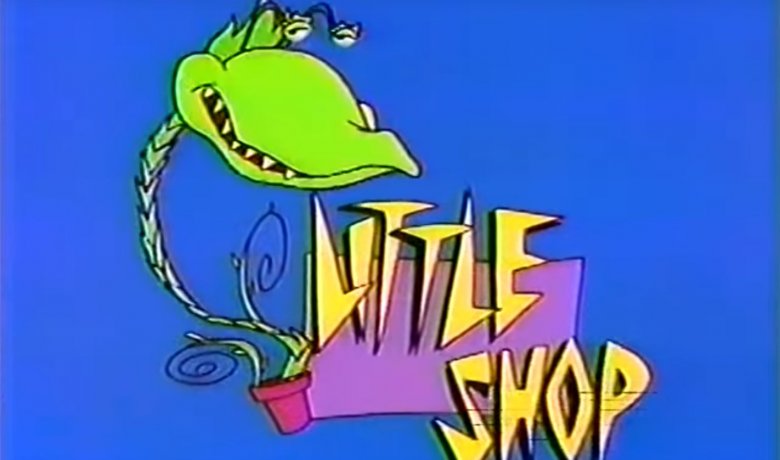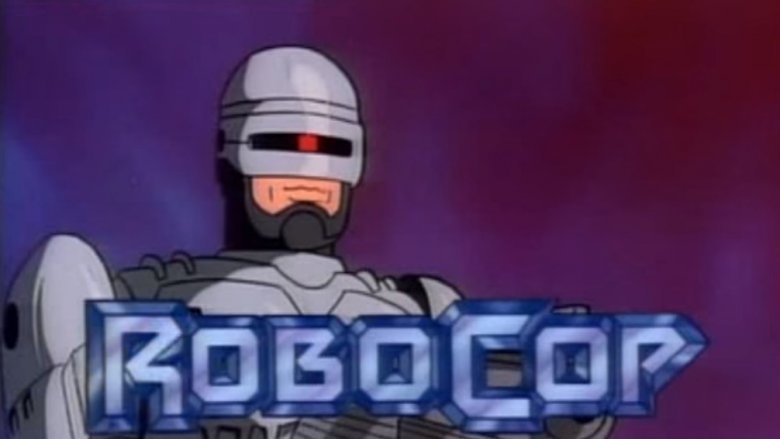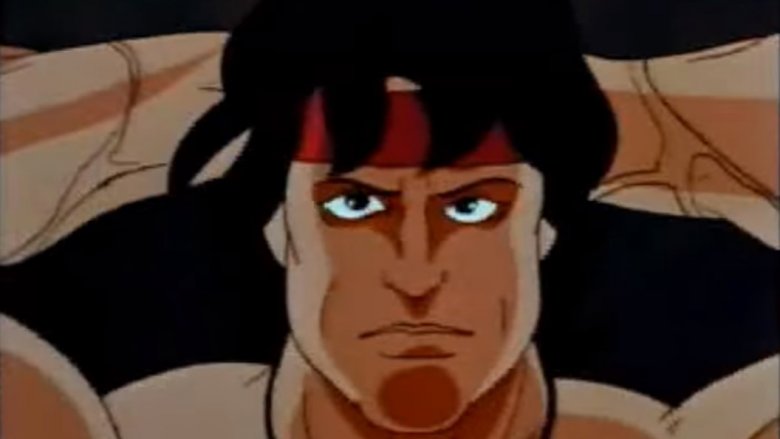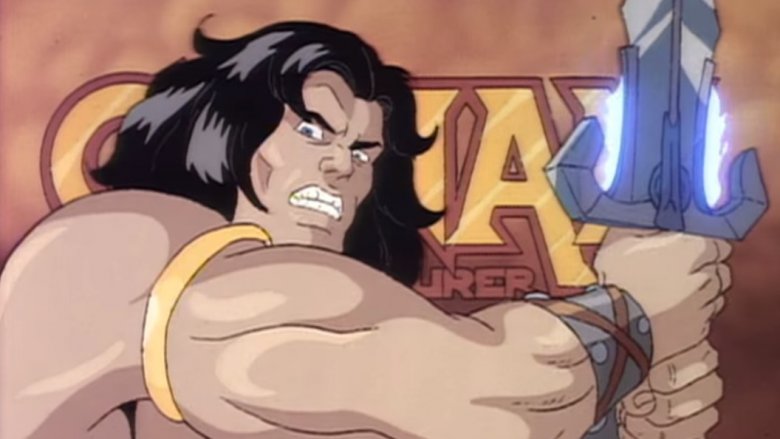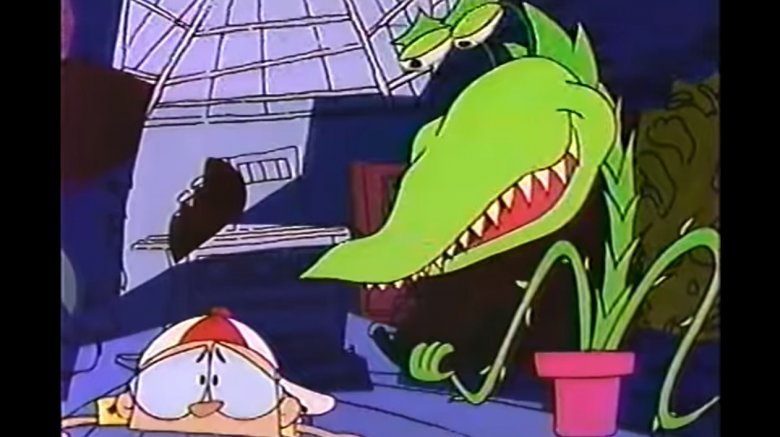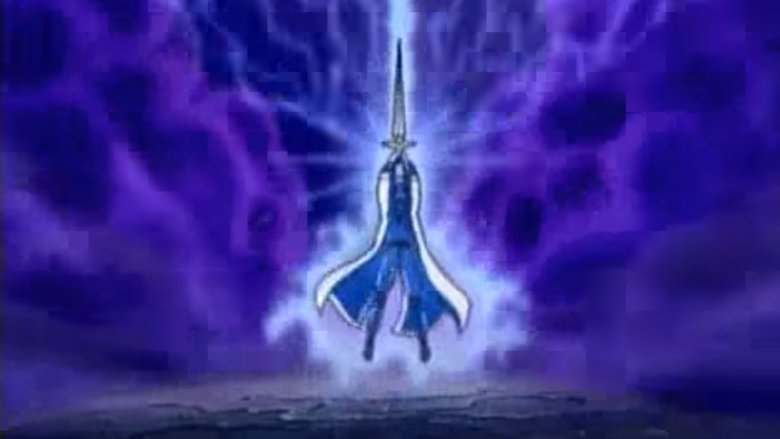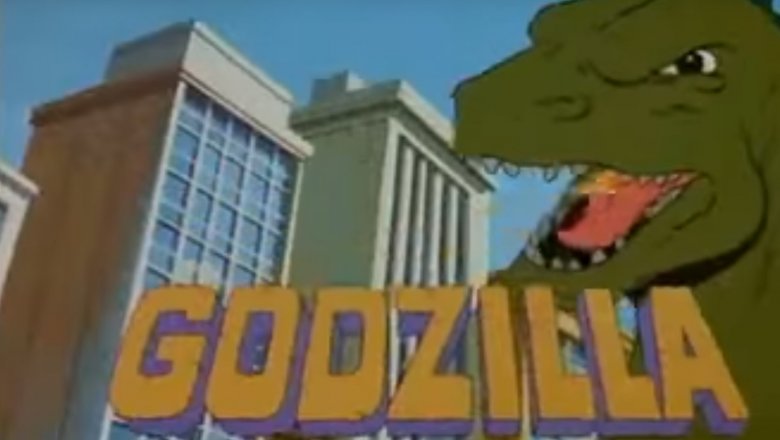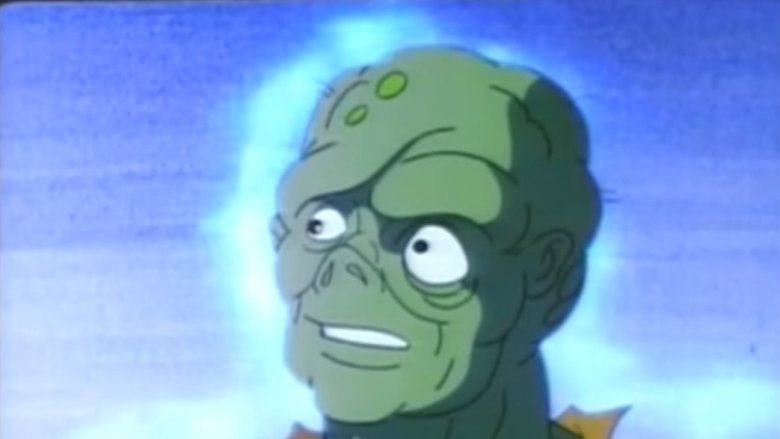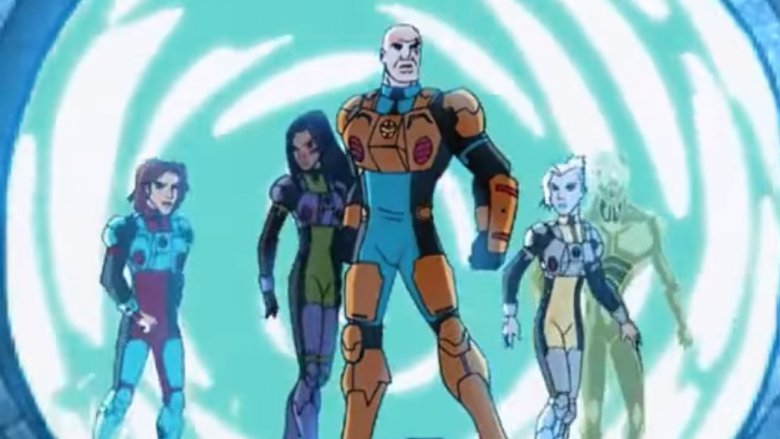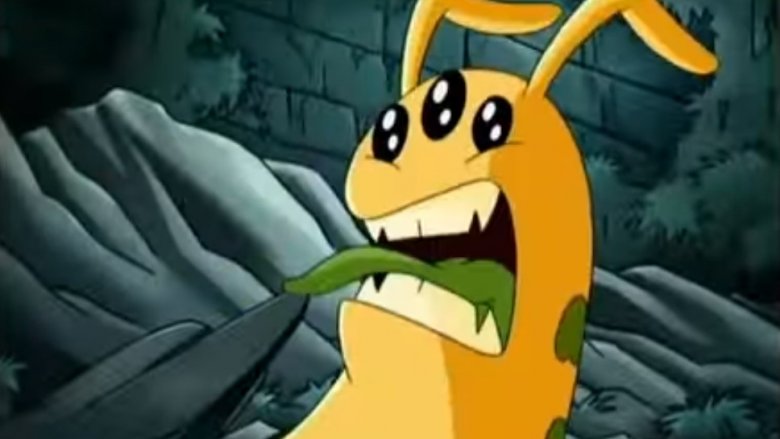The Weirdest Movie Franchises That Were Turned Into Kids' Cartoons
The '80s and '90s were a strange time to grow up, culturally speaking. Swaths of movies and TV shows came out that, at a glance, looked an awful lot like they were for kids. RoboCop, for example, doesn't just look like an action figure, he looks like someone melted a thousand other action figures to make a bigger action figure. So imagine the disappointment in the eyes of kids from that era when they found out the movie was rated R for disturbing things like violence, language, nudity, and Kurtwood Smith's forehead.
Luckily for those children and Hasbro's bottom line, there was a tendency to take established adult franchises and turn them into kid-friendly Saturday morning cartoons. It sounds unusual, but you have to remember that Teenage Mutant Ninja Turtles started out as a comic book about sewer monsters stabbing people to death. You can't blame the networks for trying. Here are some bananas examples.
For OCP's in-house daycare
Starting out simple. RoboCop is the story of Officer Alex Murphy being turned into some sort of cop/robot hybrid that we really wish there was a name for and going to war with Kurtwood Smith in a winner-take-all reflective forehead competition. It looks like good clean fun, right up until people start getting their limbs shotgunned off.
But what's the point of having a protagonist who's a toy if you can't sell any toys? In late 1988, a not-quite-financially-awesome-yet Marvel put out RoboCop: The Animated Series. Changes were made when adapting the show from the source material, of course. Guns were replaced by laser guns (that pops up a lot) and criminals were more interested in vandalizing arcades than murder or drug trafficking. Overall, it was, well, bad, but don't let that stop you from watching bootlegs of all 12 episodes on YouTube since, much to RoboCop's chagrin, it's not the kind of intellectual property anyone is trying to protect.
Bonus: When the first one didn't work out, they tried it again a decade later with RoboCop: Alpha Commando.
Rambuddies
You remember recess in elementary school. What kid didn't want to play psychologically scarred Vietnam vet? If only there had been a wacky cartoon on which to base your playground character archetype.
Cue theme music!
While First Blood and, to a lesser extent, its sequels, explored the emotional trauma of war on the oft-overlooked human beings who experience it, Rambo: The Force of Freedom followed John Rambo and his team of freedom ... forcers as they adventured through cities, deserts, and outer space for good measure, striving to stop the villainous S.A.V.A.G.E., a criminal organization whose initials definitely stood for something. Was it a blatant G.I. Joe ripoff? Pretty much. But it also meant finally finding out how Rambo would react if the forces of evil tried to steal Santa Claus.
In the end, a total of 65 episodes of Rambo: The Force of Freedom were produced. At 25 minutes apiece, that means there's actually significantly more cartoon Rambo than there is live action.
Conan the Role Model
When asked what is best in this life, Conan famously replied "To crush your enemies, to see them driven before you, to hear the Lamentations of their women, and to do it all over a bowl of delicious Alpha-Bits cereal."
Conan isn't really anybody's idea of a role model. The dude loves to bust stuff up, steal, pillage, and stab. Frankly, he's kind of a jerk. But you know what else he is? A property with name recognition. Hence, Conan the Adventurer.
The Conan from Robert E. Howard's stories might have been a mercenary/pirate/all around living-up-to-the-name barbarian who strangled a king and took his throne, but the Conan in the cartoon was more interested in by-the-numbers episodic adventuring and hanging out with his hi-larious talking animal sidekick, Needle the phoenix. Was it bad? Well, art is subjective, but yes. It sucked. Still, they made enough episodes to reach syndication, so good for everybody, you know?
Even Littler Shop of Horrors
Originally released in 1960 and then revamped as a musical in 1986, Little Shop of Horrors tells the story of a florist, Seymour, who discovers a flesh-eating sentient plant and sates its bloodlust, first with drops of his own blood, then by murdering people and feeding them to it. You know. For kids.
For the 1991 children's series, the plant doesn't do a whole ton of people eating, and most of the principle cast gets aged down to around 12 or 13 years old. Also the plant raps. Because of course it does. There's no sadistic dentist character, but there is a bully in headgear named Paine Driller. Also, the animation style sort of looks like the Ren and Stimpy team made a Tim Burton cartoon, so that's kind of rad.
Little Shop ran for about three months before Seymour was suddenly pulled from the television schedule.
At least 'MacLeod' lends itself to Happy Meal toys
You might argue that it'd be hard to turn an off-brand fantasy series about people cutting each other's heads off into a show for kids. The makers of Highlander would probably retort that it wasn't an easy concept to sell as a movie either, so stop trampling their dreams, you killjoy.
Oddly, Highlander: The Animated Series decided to skew darker in its adaptation. Within the show, the apocalypse has already gone down and the main character from the movies, Connor MacLeod, dies right at the top of the series, leaving protagonizing duties to Quentin, another MacLeod with a sick ponytail and an age range more relatable to the kiddy folk.
The show, as you might expect, goes light on decapitating and heavy on zany sidekick pet characters. Sadly, it also met its Quickening at the 40-episode mark, leaving its syndication chances null and its legacy less than immortal.
Godzilla minus the best parts of Godzilla
Oh, Hanna-Barbera. You runaway train made up of a thousand identical cars. How did you ever go out of business?
In 1978, the animation juggernaut that was Hanna-Barbera put out Godzilla: The Animated Series. They took the premise of a gargantuan lizard who lived for destruction and bravely asked the question "what if he had a lil' buddy? A cute lil' buddy who got into mischief?" and then, presumably, threw up on themselves from too much self-celebratory victory scotch.
Yes, Godzilla: The Animated Series followed in the tried and true footsteps of Scrappy Doo by giving Godzilla a laugh-a-minute nephew named Godzuki. Godzuki was a hoot. He got into hijinks and slipped and fell on his little bum. It was the '70s, and lead paint chips were still technically part of the food pyramid, so kids were easier to entertain.
Sadly, a show about a lizard who destroys buildings and melts people with his breath is difficult to pull off when he's not allowed to destroy buildings or melt anyone with his breath, being a kids' show and all. The show ran for 26 episodes before being canceled.
Kids learn about Toxic masculinity
Stop us if you've heard this one: Through exposure to toxic chemicals, a ragtag group of misfits becomes empowered with superhuman abilities, which they use to stop bad guys from doing bad guy things. If that sounds like the beginning of every piece of mainstream boy-centric kids' programming for the last 40 years, it's only because it totally is. In this case, there was one key difference. It was based on the indie shlockfest The Toxic Avenger, and it was butternuts.
The Toxic Crusaders takes the basic premise of Troma's The Toxic Avenger and scrubs it clean of nudity, voyeurism, adult language, and people catching fire. In the cartoon, boilerplate nerd Melvin falls into a vat of grossonium and becomes a hideously deformed creature of superhuman size and strength. He fights run-of-the-mill bad guys. He makes buddies with other mutants. The whole thing feels shockingly close to its Troma roots, but with a shocking added layer of self-awareness, as well as a sentient mop.
Infinitely bad idea
Roland Emmerich's Stargate is a real weirdo of a pop culture phenomenon. The unceasingly self-serious original movie, starring Kurt Russell, James Spader, and the dude from The Crying Game, wasn't particularly beloved when it was released. Somehow, though, it managed to inspire a small empire of spinoffs, including three TV shows, a web series, and, yes, a cartoon.
Weird? Totally. The film and TV series the cartoon was based on were pretty heavy on gun violence. Luckily, as you'll no doubt have noticed by now, there's no amount of grievous bloodshed that can't be replaced by a nutty pet sidekick, and in Stargate Infinity, that role was filled by ... wait, really? They didn't have an adorable pet? No wonder this thing got canceled.
Stargate Infinity lasted all of 26 episodes on Fox and Sky One before meeting its untimely demise. It is survived by the promise that nobody will ever let this franchise die.
What kid doesn't love David Duchovny?
For the young bucks in the crowd, Evolution was a turn-of-the-21st-century attempt to recapture the lightning in a bottle that was Ghostbusters, only with wacky creepy aliens instead of wacky creepy ghosts. It had the director from Ghostbusters, the minimalist iconography of Ghostbusters, and Dan Aykroyd even shows up for a minute. Where it stumbles is its shot at replacing the comedic sensibilities of Bill Murray and Harold Ramis with Stiffler from American Pie. It's, you know. It's fine. Orlando Jones gets an alien pulled out of his butt.
If we hadn't already been worn down by decades of studios jumping at the chance to turn any movie into a cartoon series, it might have seemed a little off that an adult-ish comedy like this wound up as filler for the moments in between toy commercials on Saturday mornings. Alienators: Evolution Continues stuck the main characters from the movie in color-coded costumes, gave the team a goofy Slimer-adjacent pet sidekick, and didn't last that long before it got scrapped.
